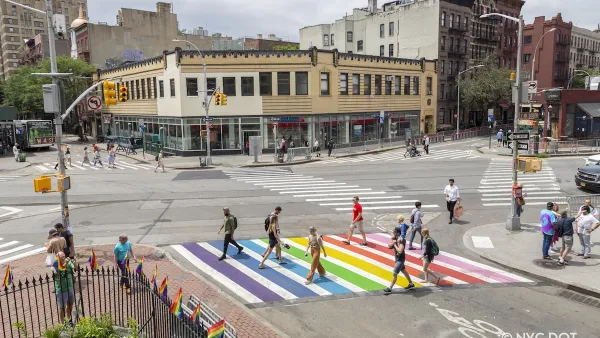A new study published in the New England Journal of Medicine examines which types of distractions lead to the most collisions. Researchers found that dialing while driving is the biggest safety hazard.
"The next time you’re tempted to make a phone call while you’re behind the wheel, remember this: Dialing while driving increases the risk of a crash or near-crash more than any other sort of distraction," writes Karen Kaplan. That's one of the key findings made by researchers who used a variety of technologies to study the behavior of drivers young and old.
"Compared to periods when they weren’t distracted, the odds of of a novice driver getting into a crash or near-crash were 8.32 higher when they were dialing a cellphone; 8 times higher when reaching for something besides their cellphone; 7.05 times higher when trying to grab the phone; 3.9 times higher when looking at something on the side of the road (including cars involved in other crashes); and 2.99 times higher when eating," notes Kaplan.
"For the experienced drivers, the only activity that increased the risk of a crash or near-crash risk was dialing a cellphone. That made drivers 2.49 times more likely to get into trouble behind the wheel, according to the study results."
FULL STORY: Dialing while behind the wheel is riskiest form of distracted driving

Planetizen Federal Action Tracker
A weekly monitor of how Trump’s orders and actions are impacting planners and planning in America.

Chicago’s Ghost Rails
Just beneath the surface of the modern city lie the remnants of its expansive early 20th-century streetcar system.

Amtrak Cutting Jobs, Funding to High-Speed Rail
The agency plans to cut 10 percent of its workforce and has confirmed it will not fund new high-speed rail projects.

Ohio Forces Data Centers to Prepay for Power
Utilities are calling on states to hold data center operators responsible for new energy demands to prevent leaving consumers on the hook for their bills.

MARTA CEO Steps Down Amid Citizenship Concerns
MARTA’s board announced Thursday that its chief, who is from Canada, is resigning due to questions about his immigration status.

Silicon Valley ‘Bike Superhighway’ Awarded $14M State Grant
A Caltrans grant brings the 10-mile Central Bikeway project connecting Santa Clara and East San Jose closer to fruition.
Urban Design for Planners 1: Software Tools
This six-course series explores essential urban design concepts using open source software and equips planners with the tools they need to participate fully in the urban design process.
Planning for Universal Design
Learn the tools for implementing Universal Design in planning regulations.
Caltrans
City of Fort Worth
Mpact (founded as Rail~Volution)
City of Camden Redevelopment Agency
City of Astoria
City of Portland
City of Laramie





























